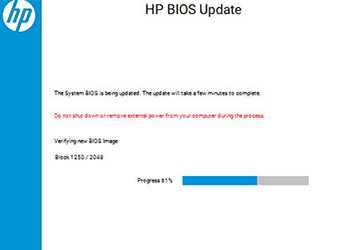5 Steps to Troubleshoot Your Laptop’s Battery Life Issues
We all know the pain of relying on a reliable laptop for work on the go and having the battery drain too quickly. Short battery life can impact productivity, but targeted troubleshooting can help find solutions to restore uptime.
You can regain lost uptime by systematically assessing battery health and adjusting settings, usage habits, and maintenance practices.

This simple guide will help you address the five critical steps to diagnosing battery drain and implementing fixes to extend your laptop's life on every charge.
With a few tweaks, you can safely unplug, knowing performance won't degrade prematurely. This blog post explains some of the basics of battery updates that can extend battery life and improve reliability.
Let's start!
Your laptop's lifeline: Know your battery health
Battery capacity naturally decreases over years of use, but factors such as power management settings, usage patterns, background applications, and faulty hardware can accelerate battery drain.
Symptoms that indicate a defective battery include sudden shutdown with more than 30% charge remaining or half the runtime of a new battery.
Assessing battery wear, system configuration, and daily habits provides context for problem areas.
5 Troubleshooting Steps to Repair Your Laptop Battery
Targeted optimization in a few key areas can significantly improve day-to-day battery life. Through practical testing and adjustments, you can take targeted remedial measures to stabilize and extend the time between charges.
Let's review basic best practices for breathing new life into your laptop's power supply:
1. Check battery condition
Diagnosing current battery capacity and life is fundamental to troubleshooting. Tools in the operating system measure wear and tear by analyzing charge cycles and degradation.
Let's examine the usage to identify anomalies. Suppose the rated capacity is less than 80% of the original specifications, or you see a significant drop compared to previous testing. In that case, the battery may need to be stronger and replaced.
For batteries that have been used generally for more than three years, ageing will shorten the battery service lifebattery's service life.
2. Evaluate power settings
Configuring when your laptop goes to sleep and dims the screen can significantly impact energy consumption—balance performance requirements with battery priorities to achieve the ideal setup.
Adjust sleep settings to enter standby mode after 5-10 minutes of inactivity. Check the display dimming setting, which can be set to 40-60% brightness when running on battery power.
They've optimized advanced options for pausing background activity, and wireless connectivity pays off - test the inactivity threshold to find the best balance for your usage.
3. Check for battery-draining apps
Standard programs and services can quietly drain your battery faster than you think.
Use Task Manager to monitor background processes and pinpoint problematic applications for specific configurations. Browsers, antivirus software, and video streaming platforms are common culprits.
To reduce the workload, set apps like Slack, Chrome, McAfee, and Netflix to pause or turn off prominent notifications when minimized.
4. Update drivers and BIOS
Outdated firmware and controllers can cause inefficiencies that lead to rapid battery drain.
Use manufacturer tools to check for pending updates to components such as wireless cards, USB controllers, graphics drivers, and system BIOS.

Modern optimizations often target battery performance specifically. Therefore, firmware updates should be taken seriously to benefit from the improvements.
5. Recalibrate the battery
Inconsistencies in remaining battery percentage displays may be due to calibration errors and can be resolved by syncing.
Fully charge the laptop while it's off, then use the battery until it goes to sleep due to depletion.
Charge your device to 100% without interruption to recalibrate your smart meter. Multiple loops are performed to correct any misalignments, resulting in more predictive measurements.
Prolonging Your Laptop's Battery Health
Because this approach is optimized through targeted troubleshooting, sustainable improvements require ongoing maintenance through responsible charging and storage habits to support service life.
Disconnect whenever possible, limit the frequency of complete charge cycles to less than 95%, and avoid sustained peak capacity to prevent unnecessary wear and tear.
Stay one step ahead of battery degradation with timely replacement and targeted charging, and apply troubleshooting steps when necessary to keep your device on the lifeline of uninterrupted productivity for years to come.